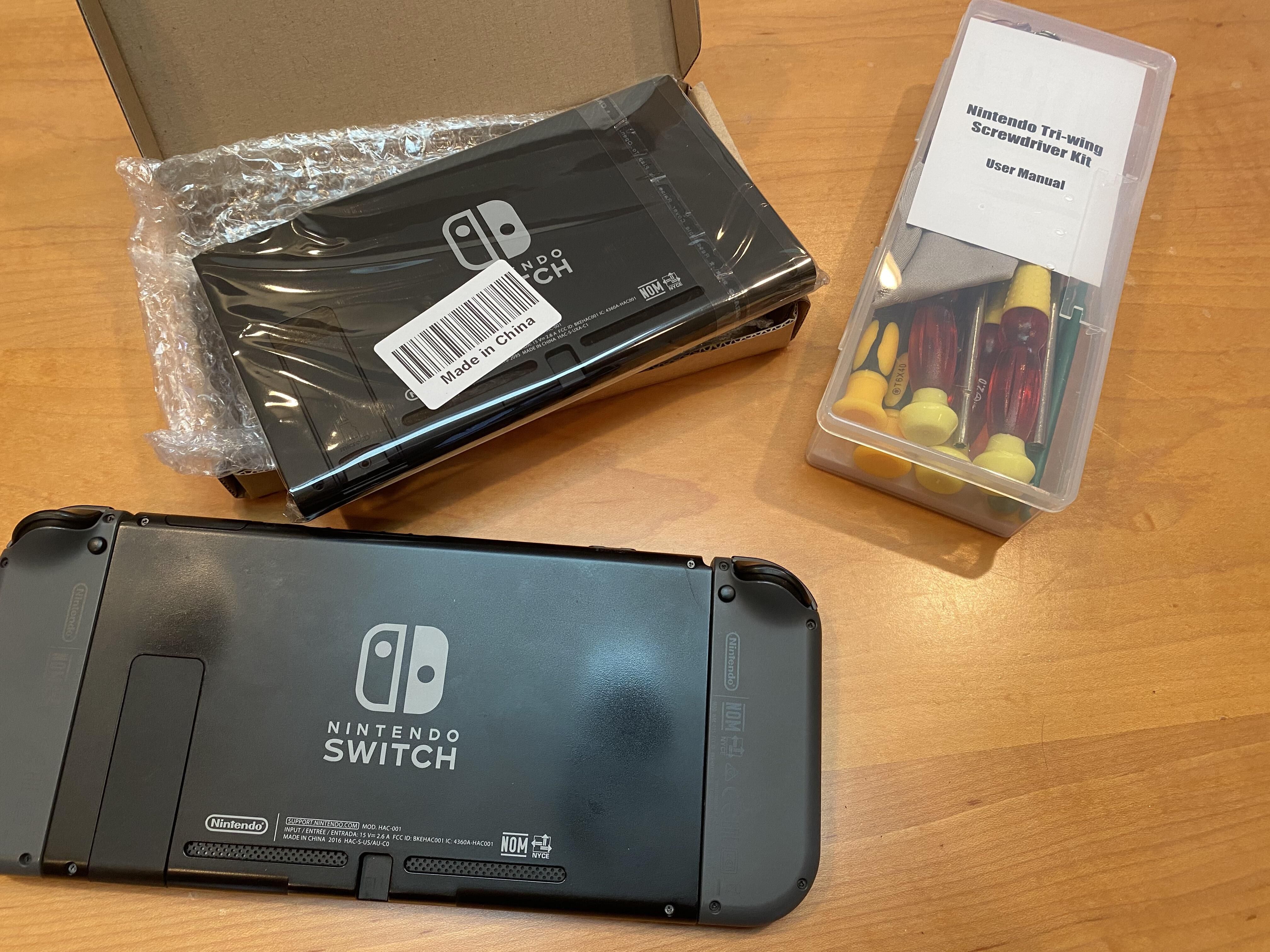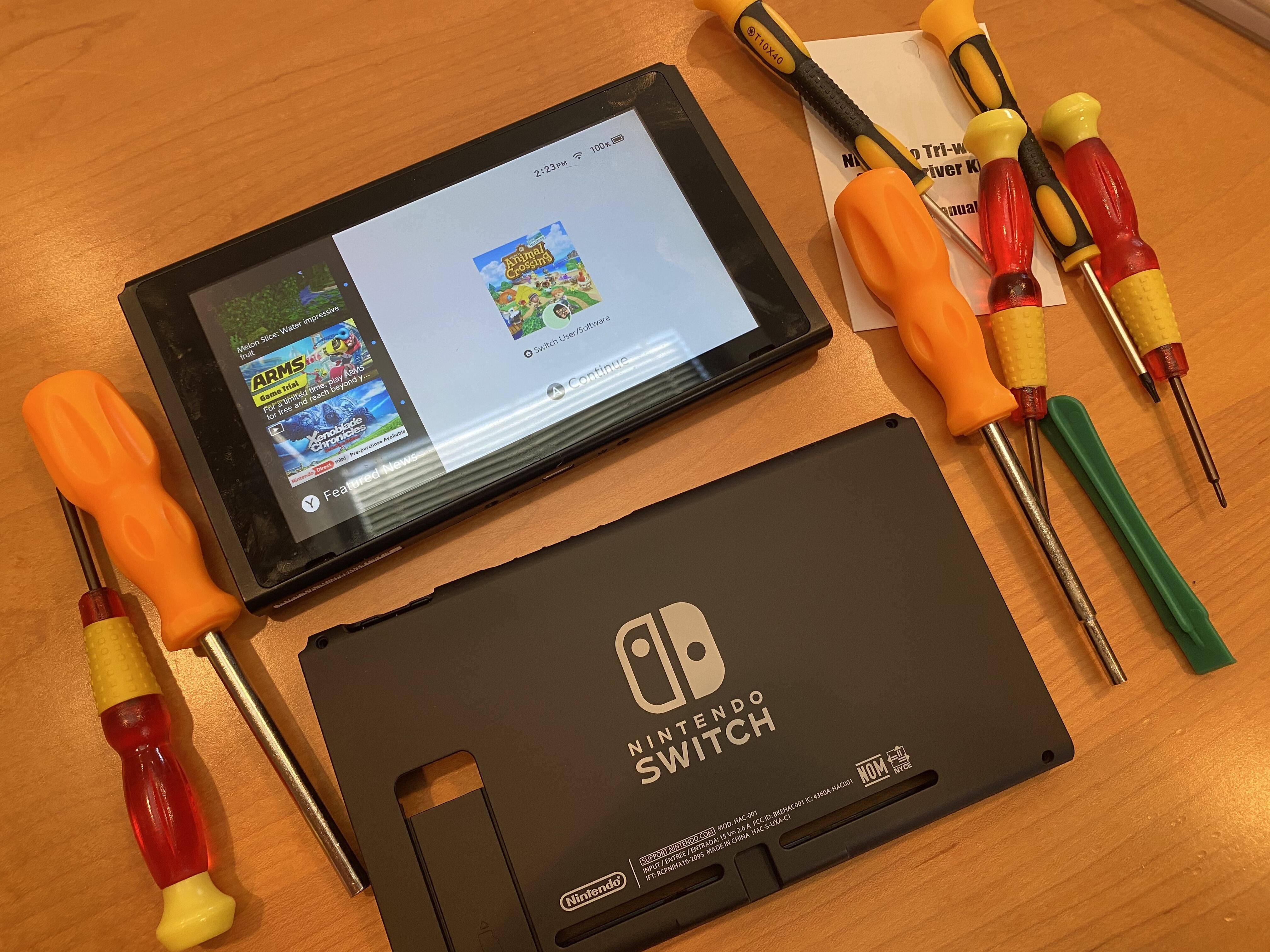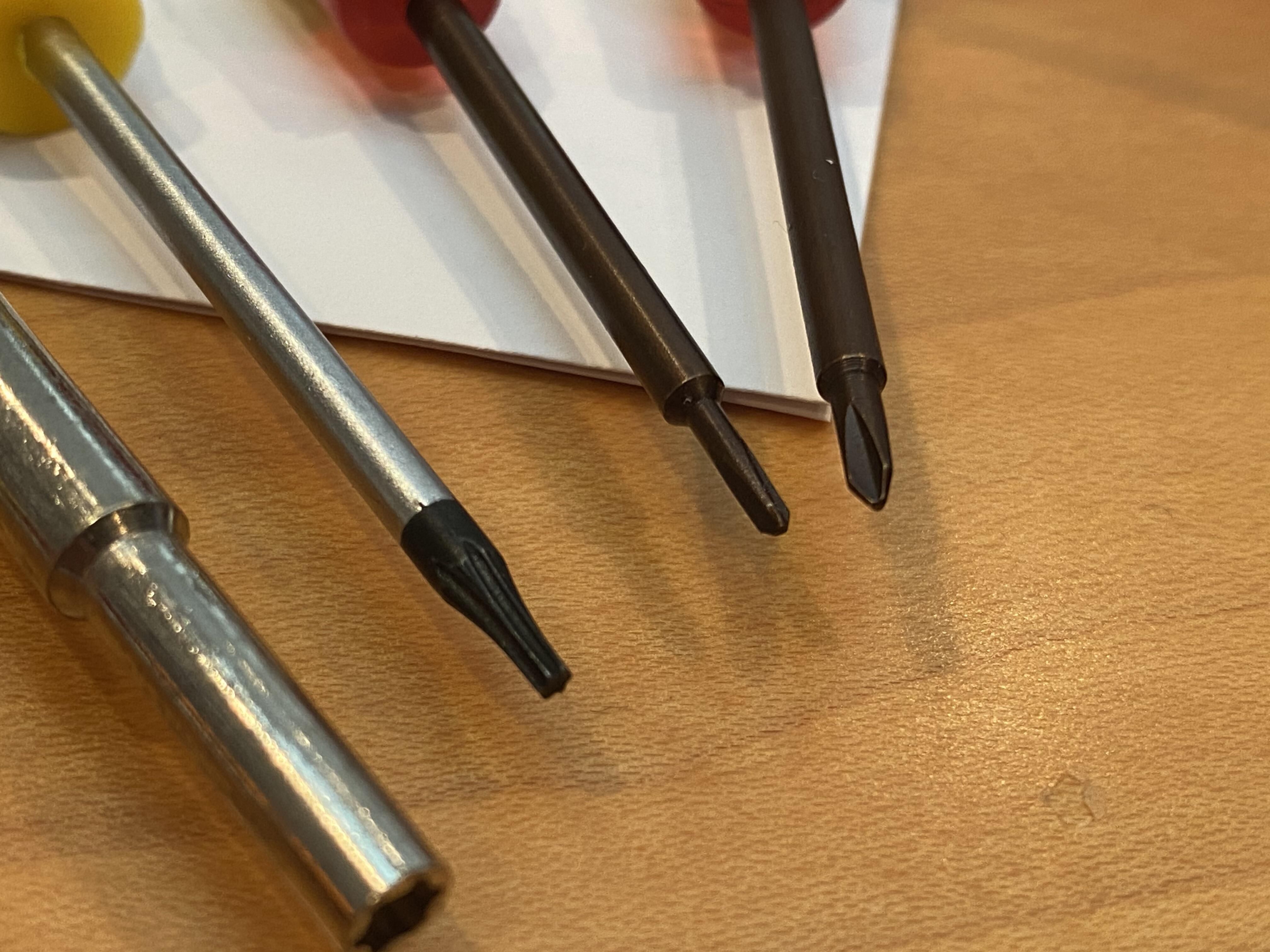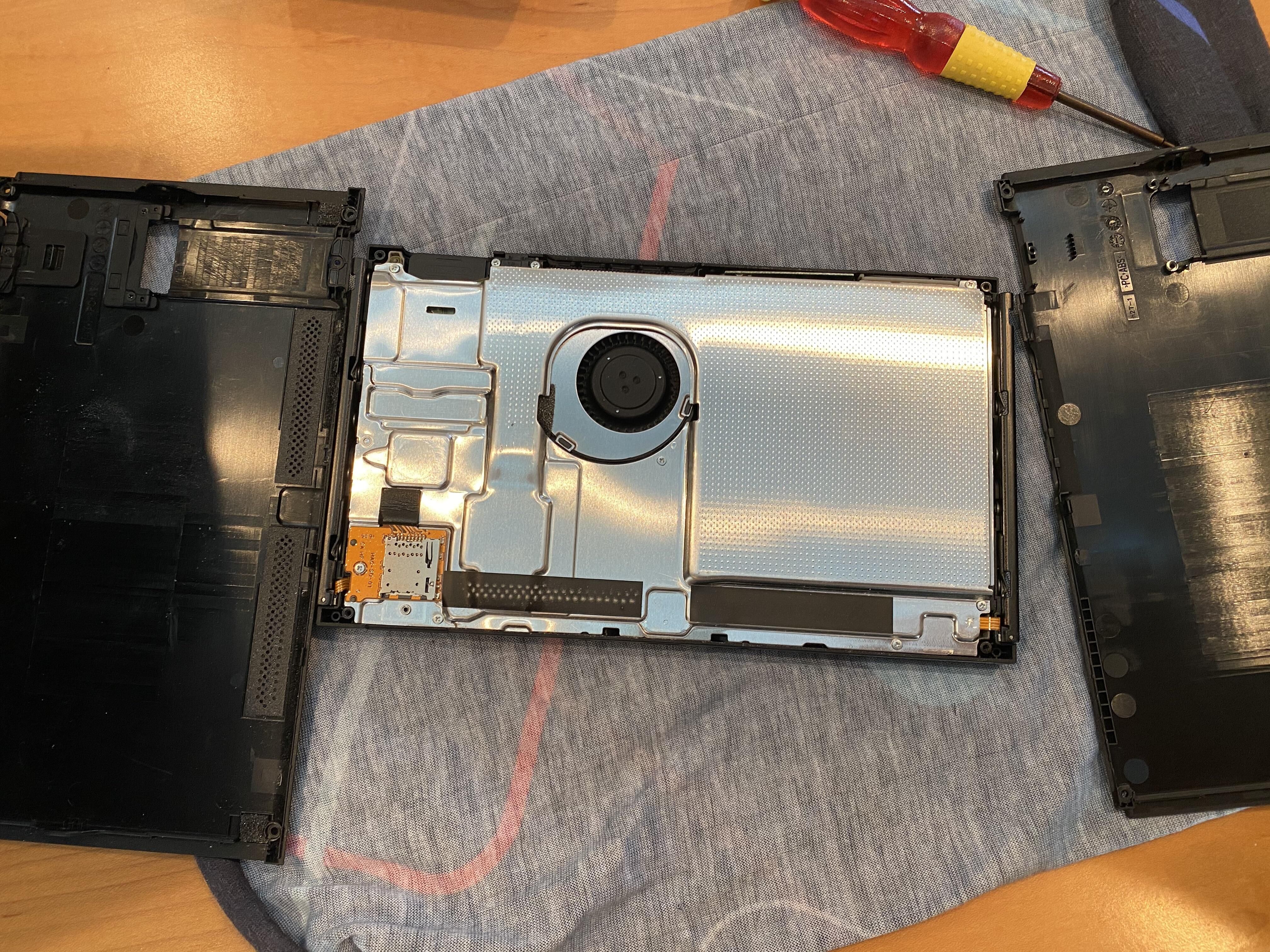If you break your Nintendo Switch like I did, here's how to fix it
New Horizons for days, jostling it out of the dock in the mornings while we've been stuck at home. I told them to be careful -- then I saw the crack on the back.

It wasn't a big crack. But it was there. Of course, I freaked out.
I have issues with things breaking. And I'm not a repair-oriented person. I don't have fix-it in my blood. My backyard is a mess. Disorder terrifies me, and yet it happens. And sooner or later, electronics get damaged.
The Nintendo Switch has some known problems: Joy-Cons occasionally breaking, and Switch cases cracking along the vents or along the corners on the back. I googled my problem and saw a lot of others had similar cracks in well-used systems, too.

So maybe it wasn't it my youngest kid, who I blamed. I took a breath. I looked up how to fix it. Because, right now, Nintendo Switch systems aren't easy to buy, Nintendo has paused official repairs, and we're not going out anywhere anytime soon.
I've seen others posting pictures of their Switches with new colorful cases they put on, and Joy-Con kits they carefully assembled, or even Joy-Con fixes. A cracked plastic back? Come on, Scott. You can do this.
iFixit immediately came up in my search with a great step-by-step guide. You should use it. I'm here to tell you how I did following that guide, and what I ordered.
Also, be aware that self-repairs like this could void your warranty, if you still have one. And to be safe, just make sure you've backed up cloud saves for your games.

Going shopping
I went to Amazon to get some spare parts: a rear case and front cover that seemed very well-reviewed, so I bought it ($9.99). I looked for Switch repair tools, and went with a set that had a bunch of big, separate (vs. interchangeable head) screwdrivers (currently $21, but I paid $18.89). Total: $30.79.
They took a week to arrive -- not as long as some orders right now, maybe because they're for repairs. I let them sit a few days because of coronavirus (just to be sure), and wiped them down with Clorox wipes.
Then, I started.

First: The unscrewing
The next steps involved taking the original rear case off. Some advice before proceeding:
Lay the Switch face-down on a soft cloth. You don't want to scratch it up.
Pull off the kickstand. You'll need that off before removing the rear cover. It's easy to take off, and Nintendo has a guide. Push in a bit on one side. Attaching later is similar but in reverse.
Be very careful with the screws. The tri-wing specialized screws, and some Phillips-head screws, are incredibly small. Some are also very short. I unscrewed them all in the order iFixit recommended, four corners first.

Those were OK, but some felt stuck with grime. I was extremely worried about stripping the tri-wing screws. I kept the screwdriver still and turned firmly but gently at the same time.
Thank goodness the screwdrivers are magnetized, keeping the screws attached a bit after removing. I placed them in little dishes, to remind myself what step they were from. I dared not drop one by accident.
- Next came the Micro SD card slot screw, which wasn't as tightly attached.
- Then came two Phillips head screws on the bottom, on either side of the USB-C port.
- Then, a Phillips head screw just to the side of the top vent.
- Then, the middlemost screw on the side rails where the Joy-Cons normally slide in, one on each side.
I pulled the plastic off gently; it got stuck a bit. I noticed how much dust there was, and some of the plastic tabs had already broken off.

There are more steps than you think
At this point, iFixit said to reverse the steps. But I realized there were still some missing parts to my Switch rear cover:
- The cartridge slot cover was on the original cover, but not on my new one.
- A little bracket near the Micro SD card slot wasn't on my new cover, either.
- Nor were the little vent grille covers on the bottom of the cover, or little foam squares on the corners.
I went into a panic now, but decided to just move the parts over. I gently unscrewed the SD card and cartridge parts and reinstalled them on the corresponding areas of the new cover.
The vent covers, those weren't as easy. I saw people online had gently peeled off and glued on. They're little strips of plastic. I pulled them off, and found they had just enough stickiness left to stick on again like a sticker, and kind of move on from there. The foam corner squares I didn't worry about.

Unexpected panic: The lower plastic tabs
Then I hit a serious snag. I tried snapping the new cover on, but it wouldn't fit. One bottom plastic corner wouldn't snap in. It looked like the hole in my Switch wasn't deep enough for the tab.
I have no idea what happened here. Nothing was left in my Switch that I could see, and the rear cover I removed was missing that plastic tab completely. I couldn't find anything online that matched my problem.
It was time to improvise. I tried sawing the plastic tab off.
I used a pocket knife and started gently trying to remove the plastic tab from the rear cover without breaking everything. This is where I felt like I'd seriously gone off road. Amazingly, the tab broke off and I was able to snap the cover on. Not ideal by any means, but it worked.
The rear cover was on, and all the missing pieces were now attached. Things looked like they were going in the right direction.
Screwing everything back in: Be even more careful!
I screwed the screws back in, in reverse order, backtracking through the steps I took in the first place. Tiny screws are even harder to get back in than they are to take out. I tried lowering them in and then positioning them on the magnetic screwdriver, and very carefully screwing back in, not over-tightening at all. I sweated. I may have stripped a few screws a bit. I'm never doing this again, I told myself.

Total time: About an hour (including filming the whole process)
I tried to document my repairs by propping up an iPad and showing what I was doing. And I took things really slowly. It was about an hour of work. I got really stressed. But I was damn proud when I was done. And then, I turned on the Switch to make sure it worked. Yes, everything seemed (and seems) fine.
I did it.
I showed my son how the cracked back was all nice and smooth now, all fine.
He just nodded and asked to play Animal Crossing.
I gave him the Switch, and went to the kitchen to do dishes and make dinner. I felt more sure of myself in a world where I've been feeling out of control. I took a breath. Repairs can happen, new skills can be learned. Broken Switches can be fixed. This is my little story of my own anxieties. I hope you feel confident enough and careful enough to face yours, too.
You should read it
- What is PP plastic? These products are manufactured from PP plastic
- Chemical recycling can be a solution to the problem of plastic waste pollution
- Things to know when using food plastic
- 'Surgery' Macbook new plastic shell
- Instructions on how to make a helicopter model from a very simple plastic bottle cover
- How are people using plastic to destroy nature?
- What do the symbols at the bottom of plastic bottles mean?
- Deodorize plastic containers easily with 7 simple tips
May be interested
- Nintendo sues the creator of the Switch emulator Yuzu
 nintendo is a company that enjoys trademark litigation. in an unexpected move, a japan-based console manufacturer and game developer has sued the creators of the popular yuzu emulator for nintendo switch.
nintendo is a company that enjoys trademark litigation. in an unexpected move, a japan-based console manufacturer and game developer has sued the creators of the popular yuzu emulator for nintendo switch. - Nintendo Switch will continue to lack supply in 2022
 the impact of the pandemic on sources and components for consoles such as ps5, steam deck or nintendo switch will continue until the end of 2022.
the impact of the pandemic on sources and components for consoles such as ps5, steam deck or nintendo switch will continue until the end of 2022. - Successfully install Windows 10 ARM on Nintendo Switch gaming machine
 recently, a twitter account called @imbushuo uploaded a video on a personal page that showed that he had successfully installed windows 10 on the nintendo switch.
recently, a twitter account called @imbushuo uploaded a video on a personal page that showed that he had successfully installed windows 10 on the nintendo switch. - How to play Airship map in Among Us on Switch
 an upcoming airship map will be added to the game among us in early 2021, but if you are playing the version among us on the recently released nintendo switch already have access to this map. here's how to play the toppat airship map in among us on the nintendo switch.
an upcoming airship map will be added to the game among us in early 2021, but if you are playing the version among us on the recently released nintendo switch already have access to this map. here's how to play the toppat airship map in among us on the nintendo switch. - After Yuzu, other Nintendo Switch emulators are also being targeted by Discord
 it's no secret that nintendo is a strict company that's always ready to initiate lawsuits. recently, nintendo defeated yuzu in a court battle over creating an emulator for the switch.
it's no secret that nintendo is a strict company that's always ready to initiate lawsuits. recently, nintendo defeated yuzu in a court battle over creating an emulator for the switch. - How to maintain battery life on Nintendo Switch
 the switch does not have the battery life required for long gaming sessions. fortunately, there are various ways to ensure that you can maintain battery life on nintendo switch.
the switch does not have the battery life required for long gaming sessions. fortunately, there are various ways to ensure that you can maintain battery life on nintendo switch. - 6 reasons why many people regret buying Nintendo Switch
 when they first bought a nintendo switch, many people were excited about new releases like animal crossing and didn't own any other console. but unfortunately, a lot of switch consoles are currently sitting on shelves collecting dust.
when they first bought a nintendo switch, many people were excited about new releases like animal crossing and didn't own any other console. but unfortunately, a lot of switch consoles are currently sitting on shelves collecting dust. - Successfully installed Windows XP on Nintendo Switch
 recently, an account on the social network reddit called we1etu1n, has posted photos of a nintendo switch gaming machine running on windows xp operating system, which surprised many people.
recently, an account on the social network reddit called we1etu1n, has posted photos of a nintendo switch gaming machine running on windows xp operating system, which surprised many people. - Upcoming Nintendo Switch emulator on PC
 a very interesting new project called yuzu: an emulation tool for nintendo switch, is underway.
a very interesting new project called yuzu: an emulation tool for nintendo switch, is underway. - Nintendo acknowledged that 160,000 Switch accounts were hacked
 today, nintendo has officially admitted this sad rumor.
today, nintendo has officially admitted this sad rumor.









 Your Animal Crossing: New Horizons guide to Bunny Day
Your Animal Crossing: New Horizons guide to Bunny Day 18 best Animal Crossing: New Horizons tips for Nintendo Switch to learn today
18 best Animal Crossing: New Horizons tips for Nintendo Switch to learn today The latest Final Fantasy IX PC update automatically clears all game data once it has been downloaded
The latest Final Fantasy IX PC update automatically clears all game data once it has been downloaded 9 new uses for your old Android phone
9 new uses for your old Android phone Facebook Messenger launches a separate application for Windows and Mac computers
Facebook Messenger launches a separate application for Windows and Mac computers 17 best Animal Crossing: New Horizons tips for Nintendo Switch
17 best Animal Crossing: New Horizons tips for Nintendo Switch